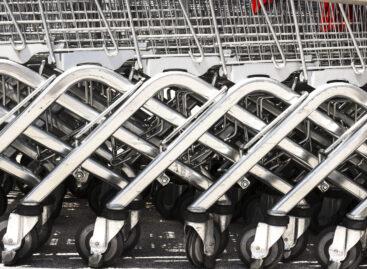Drugstore price cuts could come from mid-May: prices may be reduced in 30 product categories
The Hungarian government is planning to introduce a new markup reduction affecting 30 categories of household goods, which could lead to price drops of 16–18% from mid-May, according to a leaked government document.
 Following the earlier price cap on food products, the government is preparing for a new round of price intervention—this time targeting essential household items. The upcoming measure is set to impact 30 product categories and thousands of individual items sold mainly in drugstores.
Following the earlier price cap on food products, the government is preparing for a new round of price intervention—this time targeting essential household items. The upcoming measure is set to impact 30 product categories and thousands of individual items sold mainly in drugstores.
From toothpaste to diapers: what products are covered?
According to the draft regulation, the following product categories would be subject to the planned price cut:
-
Personal hygiene items (shower gel, shampoo, soap, toothpaste, deodorant, shaving cream)
-
Laundry and cleaning products (detergents, liquid laundry soap, dishwashing liquid, fabric softener, general cleaners)
-
Paper goods (toilet paper, paper tissues, paper towels)
-
Other drugstore essentials (diapers, sanitary pads, tampons, baby powder, hand sanitizers, etc.)
Together, these represent a significant portion of the average household’s monthly spending.
Drugstores in focus—but ripple effects expected
The regulation would primarily apply to drugstore chains such as DM, Rossmann, and Müller, which hold over 40% of the market. Although mixed-retail stores (e.g. supermarkets) would not be directly affected, the government expects the price pressure from major players to result in a broader drop in prices across the retail sector.
Temporary measure: mid-May to early September
Although official confirmation is pending, the markup reduction is expected to take effect in mid-May and remain in force until early September. The measure is intended to temporarily ease household financial burdens during the spring and summer months.
Price control on food already showing results
Earlier this year, the government introduced a 10% markup cap on basic food staples such as sugar, eggs, cooking oil, chicken breast, and pork leg. According to data from the Central Statistical Office (KSH), food prices in March remained flat compared to February, breaking the trend of early-year price hikes and contributing to a lower annual inflation rate.
The upcoming initiative appears to follow the same anti-inflationary and consumer protection rationale, but this time targeting everyday non-food household items.
Related news
Challenges of the retail sector: retail has become more crisis-resistant
🎧 Hallgasd a cikket: Lejátszás Szünet Folytatás Leállítás Nyelv: Auto…
Read more >The challenges of the retail sector, or can problems be transformed into solutions?
🎧 Hallgasd a cikket: Lejátszás Szünet Folytatás Leállítás Nyelv: Auto…
Read more >How is Hungary’s demographic decline transforming retail?
🎧 Hallgasd a cikket: Lejátszás Szünet Folytatás Leállítás Nyelv: Auto…
Read more >Related news
Christmas shock in commerce: for the first time, we can pay with bank cards in fewer places
🎧 Hallgasd a cikket: Lejátszás Szünet Folytatás Leállítás Nyelv: Auto…
Read more >Hungarian Confectionery Manufacturers Association: trends in 2025 and prospects for 2026
🎧 Hallgasd a cikket: Lejátszás Szünet Folytatás Leállítás Nyelv: Auto…
Read more >Most grocery chains will be open until noon on December 24th
🎧 Hallgasd a cikket: Lejátszás Szünet Folytatás Leállítás Nyelv: Auto…
Read more >





